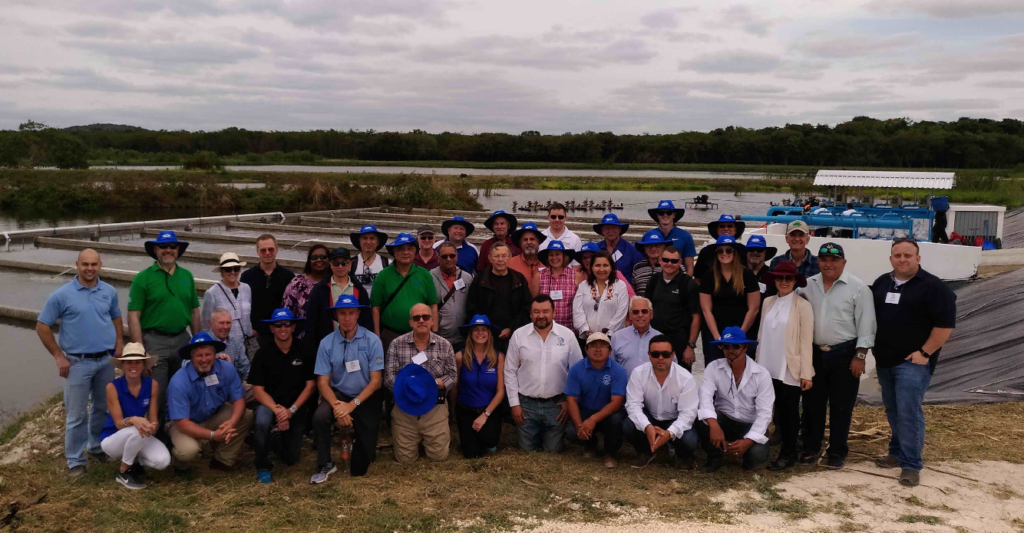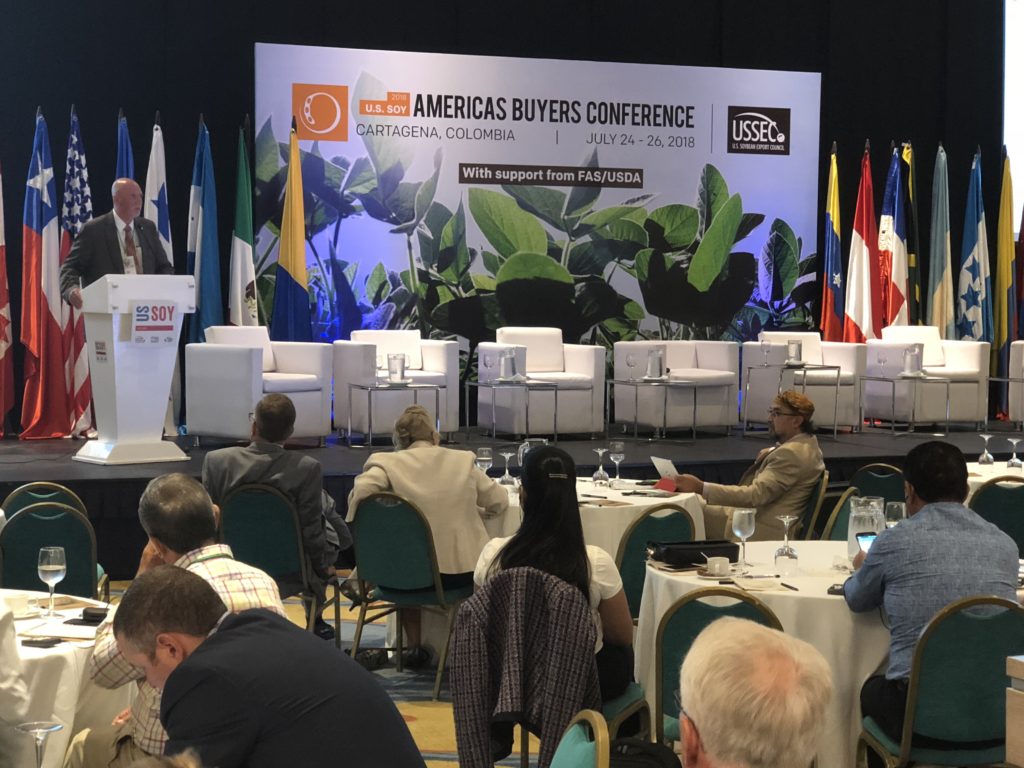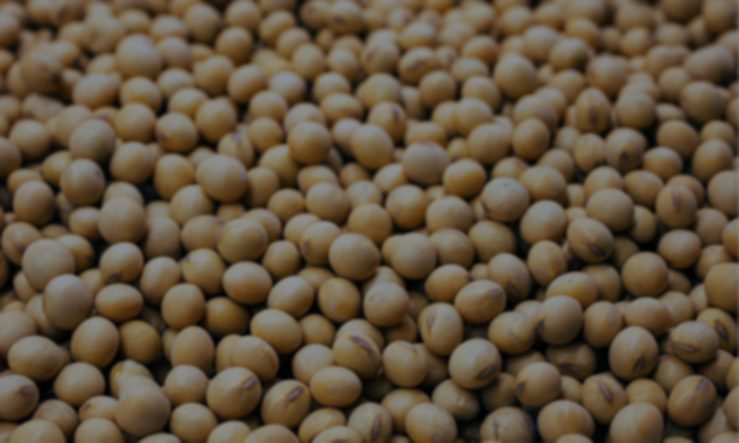Spotlight on the Americas Region: U.S. Soy Commits to Doing What it Takes
By Jen Del Carmen, USSEC
U.S. soybeans and the farmers who grow them were one of the biggest international news stories of 2018. It’s nearly impossible these days to not find soybeans on the front page of any publication, whether digital or print. While the U.S.-China trade dispute continues to be in the spotlight, the U.S. Soy industry has always worked to build and diversify multiple markets around the world.
The Americas region, consisting of Latin America, the Caribbean basin, and Canada, has long been a key market for U.S. Soy. “At the Ohio Soybean Council, we are excited about the opportunities that the Americas have for Ohio soybean farmers and we look forward to working with USSEC and other partners to continue to increase soybean demand in the region,” says Dave Dotterer, Ohio Soybean Council (OSC) Demand Committee chair.
Canada and Mexico in particular took their turn in the trade spotlight this year as the 24-year-old North American Free Trade Agreement (NAFTA) was renegotiated and replaced by the United States–Mexico–Canada Agreement (USMCA).
As of early December, whole soybean exports to the region are up 153 percent over last year. While these eye-popping numbers are due to trade flows that changed with the U.S.-China trade dispute, this is a market that has always been steady and reliable for the U.S. Soy industry.
Mexico, Canada and Colombia are some of the region’s largest markets for U.S. Soy products. With high demand in this region, the U.S. Soybean Export Council (USSEC) is working to establish valuable trade partnerships for U.S. preference, U.S. differentiation, and demand building to leverage the large U.S. market share.
“This region is the largest U.S. export market for soybean meal, soybean oil and soy ingredients,” says Kevin Roepke, who serves as USSEC’s Regional Director-Americas. “In the 2017/18 marketing year, the Americas accounted for 51 percent of total U.S. soybean meal exports, 69 percent of total U.S. soybean oil exports, and it is also the second largest market for U.S. soybeans, with 10 percent of total U.S. soybean exports.
“Sustainability is increasingly deemed a product differentiator in this region,” he adds.
And the market in the Americas continues to grow for whole beans, meal and oil. With its economic growth, the region will continue to increase demand in meat, poultry meat and eggs, in addition to production growth, continuing to be dependent on imports of grains and oil seeds.
At USSEC’s 2018 International Marketing Dialogue on December 4 in St. Louis, Roepke pointed to key opportunities for import growth to the Americas region.
First, he highlighted prospects for short-term growth, saying that U.S. Soy needs to continue to encourage more robust participation in regional networking and buyers’ events.
With the change in trade flows, both Argentina and Brazil are currently importing U.S. Soy. At this time, Argentina is the second largest importer of U.S. Soy, due to price disparity. Argentina, one of the world’s top soybean exporters, usually does not import soybeans. However, the country currently needs U.S. beans to feed its massive crushing industry after a drought because what is left of the nation’s own crops will be exported to China. Full fat soybean meal is becoming more popular in the region, providing a good opportunity for U.S. Soy as well. Finally, high oleic soybean oil is creating some excitement in the region. At the recent Crush Con event in San Jose, Costa Rica, 100 percent of the audience expressed their interest in high oleic soybean oil as “definitely” or “maybe.”
The two biggest regional challenges to short-term import opportunities for the Americas region are a poor investment climate, with issues that include lackluster economic growth; rampant corruption; deteriorating safety situations; and government instability. Additionally, the Andean Common Market (ANCOM) tax band system will reset in April 2019, which will make South American products more competitive.
The two greatest regional opportunities for long-term demand growth lie in Colombia and the Dominican Republic. Colombia, Roepke says, has opportunities in the pork, poultry and pet food industries. The Dominican Republic has a favorable investment climate and shows stability. U.S. Soy will continue to allocate resources to grow market stability there.
Let’s take a closer look at a few of the specific country markets in the Americas region.
Mexico
Mexico is a key growth market for U.S. Soy with an increased demand for meat, poultry meat and eggs due to population and economic growth.
The country has frontloaded its purchases of U.S. Soy, already purchasing about 60 percent of its committed amount for FY 19 as of early December, Roepke reports. He says Mexico will continue to be dependent on imports of grains (30 percent) and oil seeds (more than 90 percent). The U.S. enjoys a 90 percent market share on whole soybeans and 95 percent for soybean meal.
Mexico is traditionally a very strong soybean meal market for the U.S. and has ranked first or second for decades. Its feed market, the world’s fifth largest, is undergoing a crush capacity expansion, which will lead to more soybean imports and fewer imports of soybean meal and soybean oil. The country is home to Latin America’s third and fourth largest poultry producers and has strong integration with U.S. suppliers, animal protein producers, and railroads. In 2018, OSC supported two projects with the USA Poultry & Egg Export Council (USAPEEC) to increase Mexican demand for U.S. poultry.

The country’s thriving aquaculture industry also continues to grow, setting expectations for further demand of soybean meal from the U.S. and from U.S. crushed soybeans. A 12-month demonstration project at La Granja Tilapia Farm brought in-pond raceway technology (IPRS) to Campeche, Mexico, marking the debut of IPRS in Latin America, where pond aquaculture of tilapia and shrimp is expanding for a demanding domestic and export market. Mexico also has a growing demand for pet food with production higher than that of aquaculture feed.
Colombia
Colombia is experiencing a “storybook economic recovery,” says Roepke. From a country that was once seen as one of the most dangerous places in the world, this country shows “super growth potential,” he continues. Like Mexico, Colombia is viewed as a key growth market for U.S. Soy.
The U.S.–Colombia Trade Promotion Agreement (CTPA), which took effect in 2012, eliminated import tariffs for U.S. soybeans and soybean meal with a tariff rate quota (TRQ) for soybean oil. USSEC leveraged the CTPA to promote and build preference for the quality attributes of U.S. soybeans in that market.
As a result, U.S. soybean exports to Colombia have grown significantly and the trend is expected to continue as Colombian importers enjoy cost advantages from importing U.S. soybeans versus those from Argentina and Brazil. Port access to both the Atlantic and Pacific Oceans makes on-time delivery within hours from the U.S. an added advantage.
Poultry is the country’s meat of choice, with consumption at 32.8 kilograms (kg) per capita. A modern and well-managed pork checkoff, however, has led to a near doubling in per capita consumption from just slightly over 4 kg per person to over 9.3 kg per person since 2010.
The pet food industry is also a high margin growth market in Colombia.
Additionally, Colombia receives the most U.S. Soy Sustainability Assurance Protocol (SSAP) certificates in the Americas.
Canada
The United States’ neighbor to the north is a mature but stable and important market for U.S. Soy, representing the fourth largest feed market and sixth largest soybean oil market in the Americas region.
Canada is also the largest market for U.S. biodiesel and boasts strong and highly sophisticated poultry and swine industries. It is a growing soybean producer and exporter, but the country’s still-deficient crush capacity ensures continuing demand for U.S. Soy products.
U.S. Soy’s Commitment
Perhaps nothing indicates the importance of the Americas region as much as the presence of USSEC’s agricultural buyers’ conference this past July when regional feed industry thought leaders, executives and government officials met in Cartagena, Colombia.
The event was sponsored and coordinated by USSEC, with special support from the U.S. Department of Agriculture’s (USDA) Foreign Agriculture Service (FAS). The presence of the entire USSEC board of directors was a symbolic and passionate gesture of the U.S. Soy industry’s dedication and commitment to the region.
The event, which brought together roughly 150 of the region’s most distinguished industry titans, provided a forum for buyers and sellers to engage in commerce. It was capped off by a round-robin style of speed meetings where importer and suppliers are provided with a translator to network and build relationships.

Networking was key to this event.
“In addition to providing executives with relevant knowledge for decision making,” says Roepke, “we also wanted to ensure that importers had plenty of opportunities to buy U.S. Soy products at any given moment. Above all, we wanted to convey the message that not only do you receive the most value with U.S. Soy; right now, you’re also getting a tremendous bargain.”
Results have proven phenomenal, as Mexico purchased almost 400,000 metric tons (MT) of soybean meal and over 500,000 MT of soybeans in the weeks following, as confirmed by USDA reports.
“Moreover, ‘battleground countries’ — so named for their competitiveness, due to proximity and freight spreads — realized the value and seized the opportunity of having suppliers in front of them and snatched up other U.S. Soy products as a result of the conference — namely Peru, Colombia, Ecuador and even Venezuela.
The further south the U.S. can supply into the Americas, the better, as competition gets fierce in a hurry,” states Roepke. “North of Bogota, the U.S. has a good market share. South of Bogota, we need to keep working.”
